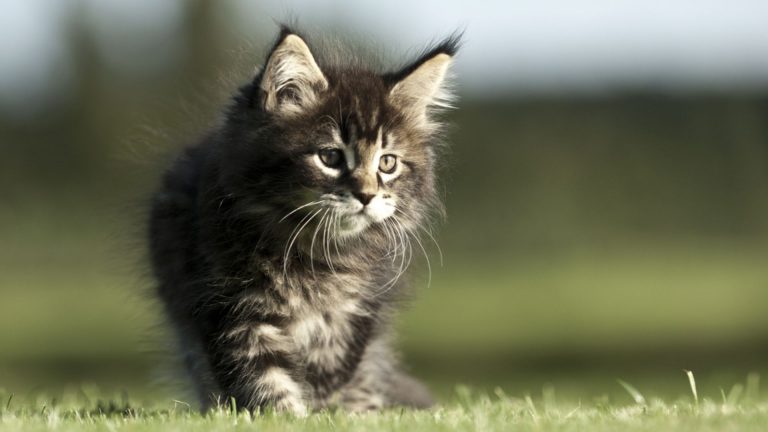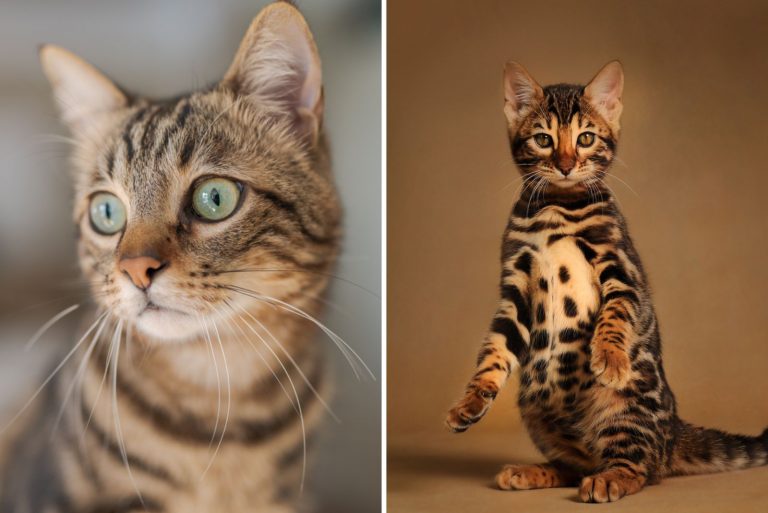7 Nicest Wild Animals On Earth And 5 You Should Keep Your Distance From
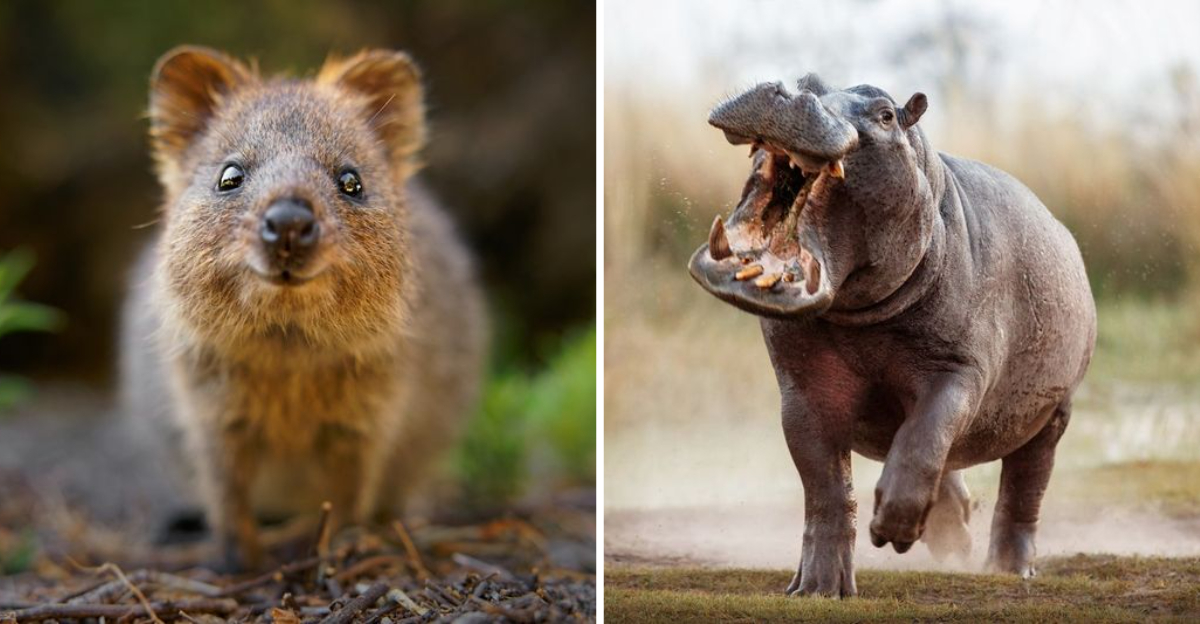
The animal kingdom is full of fascinating creatures, each with their own unique personalities and behaviors. While some wild animals show remarkable friendliness toward humans, others are best admired from afar.
Understanding which animals tend to be naturally gentle and which ones pose potential dangers can enhance our appreciation of wildlife while keeping us safe during encounters.
Ready to meet some of nature’s sweethearts and the creatures that deserve our respectful distance?
1. Capybaras
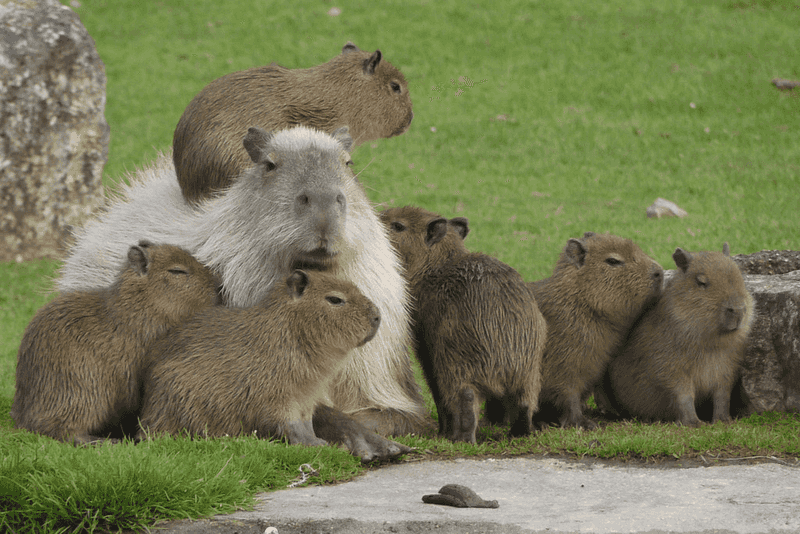
Known as nature’s zen masters, capybaras radiate calmness wherever they go. These South American rodents (yes, they’re the world’s largest rodents!) have a remarkable ability to befriend virtually any animal they meet.
Wildlife photographers often capture capybaras lounging with birds perched on their backs or surrounded by various animals that would normally be predators or prey to each other. Their peaceful temperament makes them natural mediators in the animal world.
Even in the wild, capybaras rarely show aggression toward humans, preferring to waddle away if they feel threatened rather than attack. Their chill attitude has earned them the nickname “nature’s most chillaxed animal.”
2. Manatees
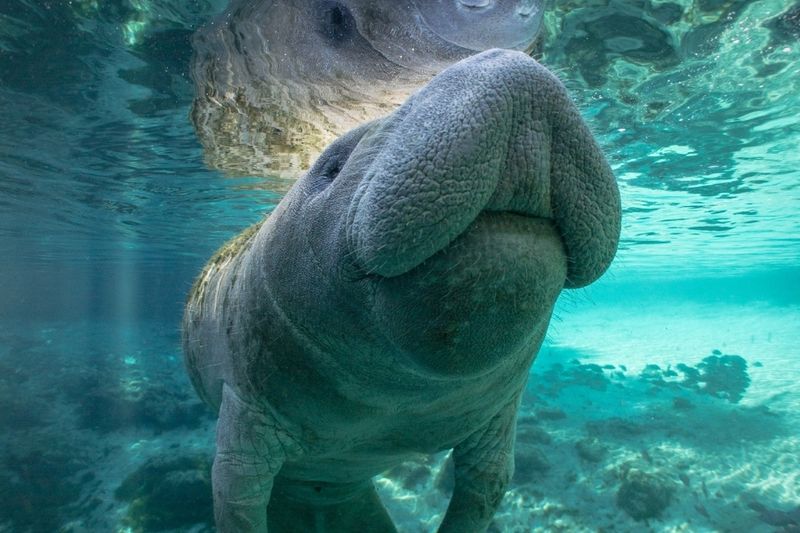
Manatees float through life with a gentleness that seems almost out of place in the wild. These massive aquatic mammals, sometimes called sea cows, move slowly through warm coastal waters, munching on plants and minding their own business.
Despite their enormous size (they can weigh up to 1,300 pounds!), manatees approach humans with curious, puppy-like interest. They’ve been known to nudge swimmers playfully or roll over for belly rubs when they feel comfortable.
Unfortunately, their trusting nature makes them vulnerable to boat strikes. Many manatees bear scars from close encounters with boat propellers, yet they maintain their sweet disposition toward the very species that often harms them.
3. Dolphins
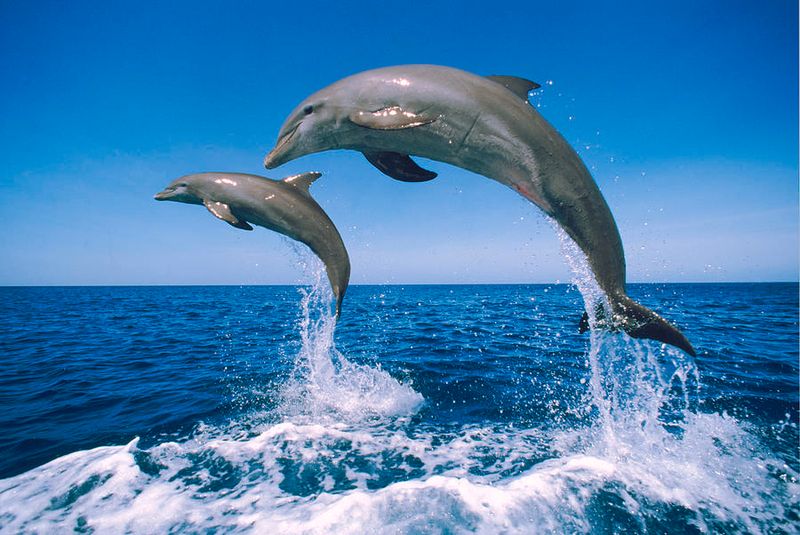
Dolphins bring a playful energy to ocean encounters that few other wild animals can match. Their curved mouths give the appearance of permanent smiles, but their friendliness goes far beyond facial features.
These marine mammals actively seek out human interaction in many parts of the world. They’ve been documented helping fishermen by herding fish toward their nets and even guiding lost swimmers back to shore. Their intelligence allows them to recognize specific humans they’ve met before.
Many marine biologists believe dolphins approach us out of genuine curiosity rather than food-seeking behavior. Their playful leaps, spins, and tendency to ride boat wakes suggest they simply enjoy our company – a rare quality in truly wild animals.
4. Penguins
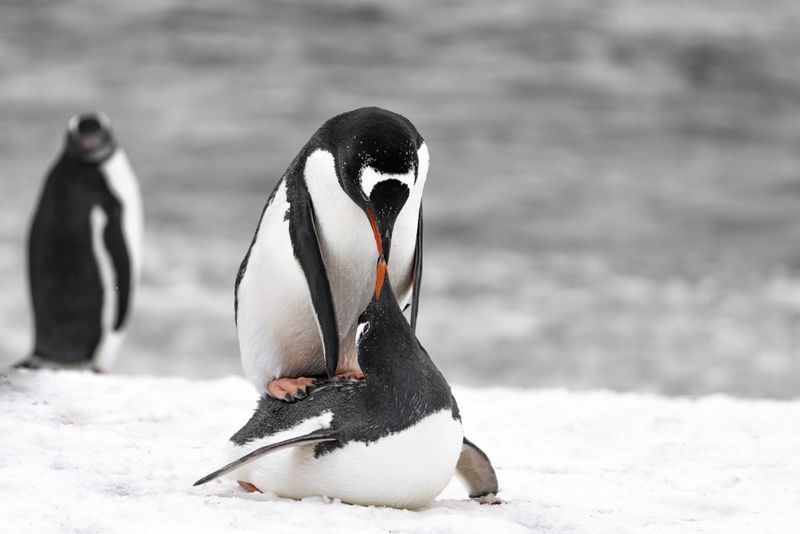
Waddling across icy landscapes in their natural tuxedos, penguins combine adorable appearance with surprisingly friendly behavior. Many species show remarkable comfort around humans, especially in areas where they’ve grown accustomed to researchers or tourists.
Gentoo and Adélie penguins often approach people with innocent curiosity, sometimes inspecting camera equipment or clothing with gentle pecks. Their lack of natural land predators in Antarctica means they never developed a fear of creatures walking on two legs.
While not technically cuddly (they prefer the company of their own kind), their trusting nature makes wildlife viewing extraordinarily intimate. Researchers working in penguin colonies often report having to gently redirect penguins who attempt to investigate their tents or equipment.
5. Quokkas
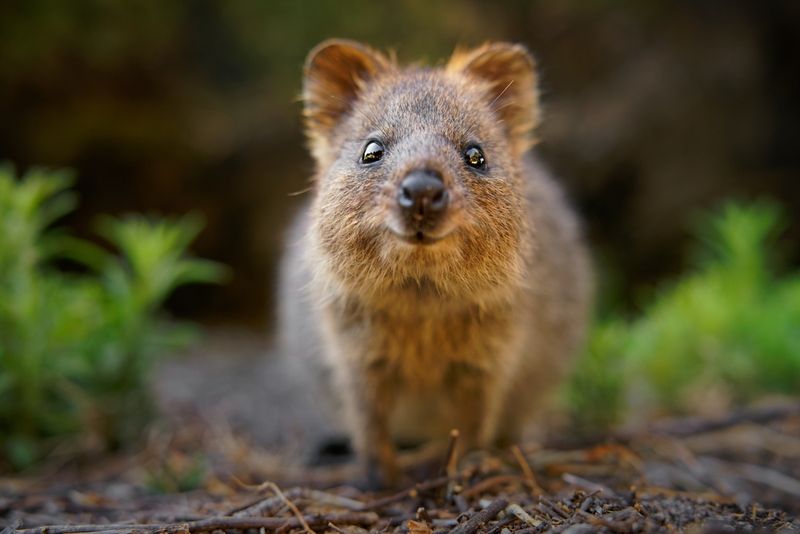
Crowned the world’s happiest animal, quokkas have won human hearts with their permanent smiles and fearless curiosity. Native to small islands off Western Australia, these marsupials approach visitors with an openness that seems almost naive.
Unlike most wild creatures, quokkas don’t view humans as threats. They’ll hop right up to visitors, sniff their shoes, and sometimes even pose for what appear to be selfies. Their natural facial structure creates the appearance of a constant smile, making encounters feel especially warm.
Scientists believe their friendly nature developed due to their isolated island habitat with few natural predators. While adorable, wildlife experts remind visitors not to touch or feed these wild animals – their digestive systems aren’t equipped for human food.
6. Elephants
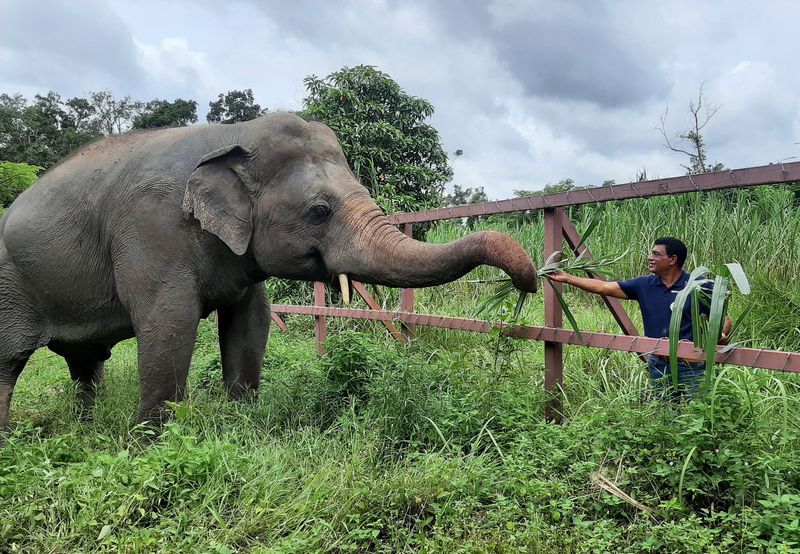
Elephants possess an emotional intelligence that makes their gentle nature all the more remarkable. These massive mammals form deep bonds not just with each other but sometimes with humans they trust.
In sanctuaries around the world, elephants who have been treated with kindness often show extraordinary affection toward their caretakers. They remember human friends for decades and greet them with excited trumpeting and trunk hugs after long absences.
Wild elephants generally keep their distance from humans, but they rarely show unprovoked aggression. Their capacity for compassion extends beyond their own species – elephants have been observed comforting other animals in distress and even showing curiosity about human babies.
7. Orangutans
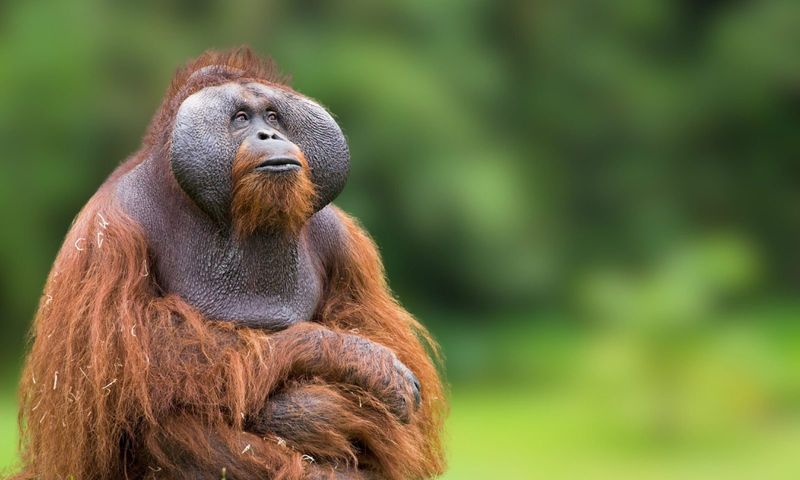
Meeting an orangutan in the wild feels strangely like encountering a long-lost relative. These great apes share 97% of our DNA, and their thoughtful expressions reveal a depth of intelligence that’s almost unsettling.
Orangutans approach humans with a gentle caution that quickly turns to curiosity when they sense no threat. Rehabilitation centers report that orangutans form strong attachments to their human caregivers, often remembering them years later.
Unlike chimps or gorillas, orangutans rarely display aggressive behaviors toward humans. Their solitary nature in the wild has fostered a peaceful temperament. When threatened, they typically retreat rather than confront, making them among the gentlest of the great apes despite their impressive strength.
8. Saltwater Crocodiles
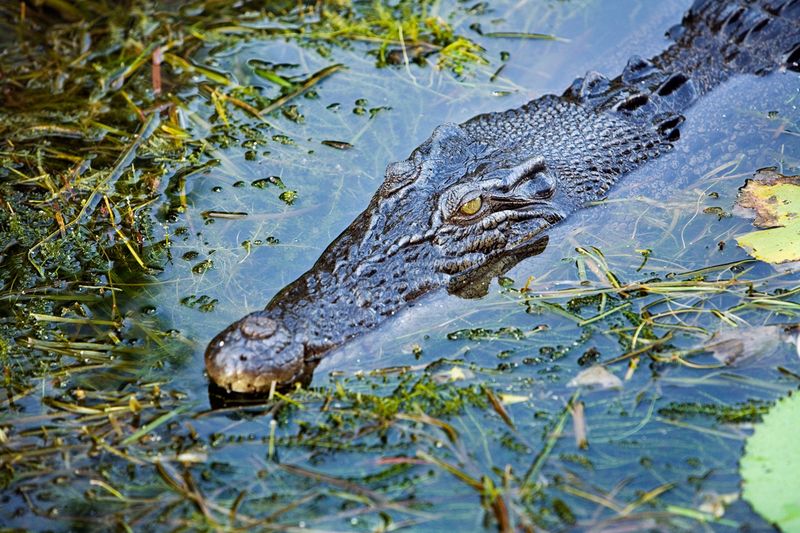
Saltwater crocodiles combine lightning-fast reflexes with bone-crushing power in a package that demands serious respect. These prehistoric predators can reach over 20 feet long and ambush with such speed that victims rarely see the attack coming.
Unlike animals that display warning signs before attacking, saltwater crocs strike without provocation or warning. They view anything moving near their territory as potential prey, including boats and humans.
What makes them particularly dangerous is their intelligence. They learn patterns, remember locations, and have been documented stalking the same human multiple times. In Australia’s Northern Territory, locals follow strict safety protocols around waterways, knowing these ancient hunters have remained essentially unchanged for millions of years for good reason.
9. Box Jellyfish
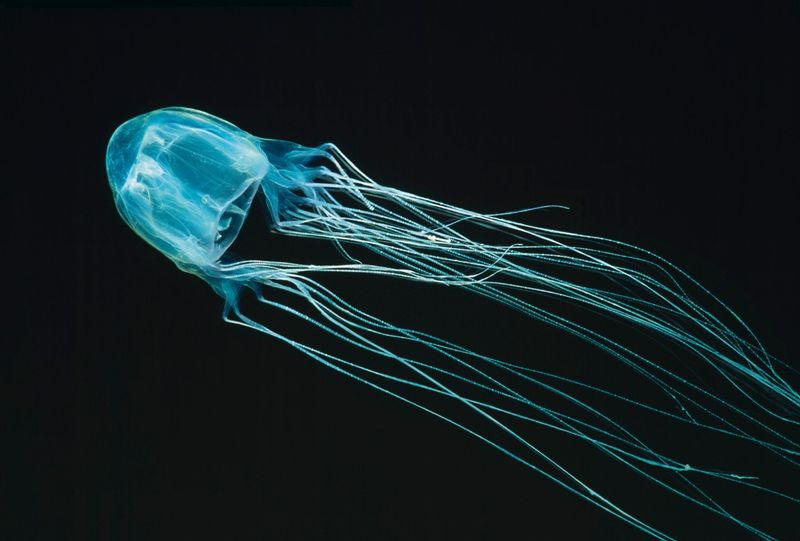
Box jellyfish might look like harmless, floating blobs, but they pack the most potent venom on the planet. These nearly transparent sea creatures have killed more humans in Australia than sharks, snakes, and crocodiles combined.
What makes them especially dangerous is their active hunting style. Unlike most jellyfish that drift passively, box jellies can swim at speeds up to 4 mph and actively pursue prey. They possess 24 eyes in clusters of six, allowing them to navigate with surprising precision.
Their tentacles contain millions of microscopic stingers that inject venom on contact. The pain is described as excruciating, and without immediate treatment, victims can die within minutes. Australian beaches close regularly during box jellyfish season to prevent deadly encounters.
10. Hippopotamuses
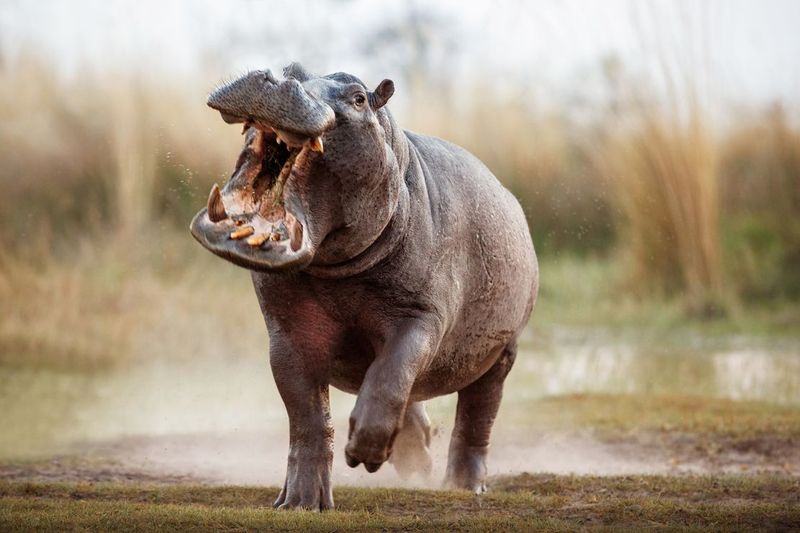
Behind those cartoonish faces and round bodies lurks Africa’s most dangerous large animal. Hippos kill more humans annually than any other African mammal, including lions and elephants.
Their deceptively cute appearance masks an aggressive temperament and territorial nature. Despite weighing up to 4,000 pounds, hippos can charge at speeds of 20 mph, easily outrunning humans on land. Their massive jaws can open 180 degrees, revealing tusks capable of slicing through metal boats.
What makes hippos particularly dangerous is their unpredictability. They show few warning signs before attacking and will pursue threats on land and in water. Local fishermen in hippo territories know to give these giants a wide berth – their seemingly peaceful water soaks can turn deadly in seconds.
11. Inland Taipans
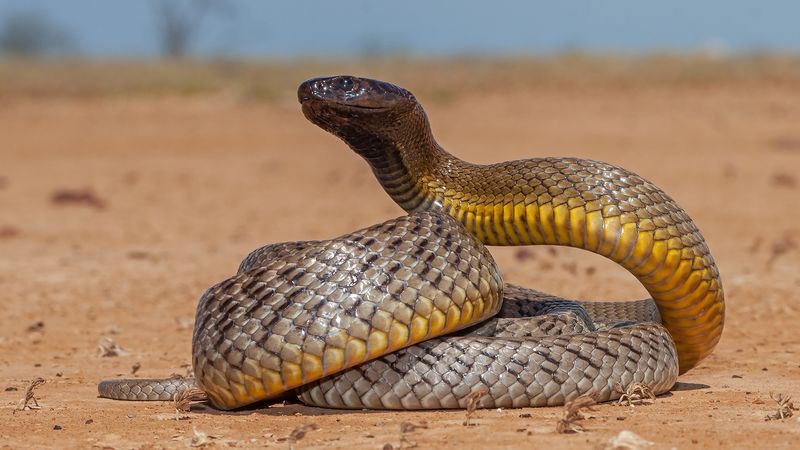
The inland taipan holds the title of world’s most venomous snake, with venom potent enough to kill 100 adult humans in a single bite. Native to remote parts of Australia, these snakes possess a neurotoxic venom that can cause death within 45 minutes if left untreated.
Unlike many dangerous creatures that display warning signals, taipans strike with little provocation. Their venom evolved to kill warm-blooded prey instantly, which unfortunately works all too well on humans who venture into their territory.
Thankfully, they live in isolated areas and generally avoid human contact. Their coloration changes seasonally – darker in winter to absorb heat, lighter in summer to reflect it – making them masters of adaptation as well as deadly predators to be avoided at all costs.
12. Cape Buffalo
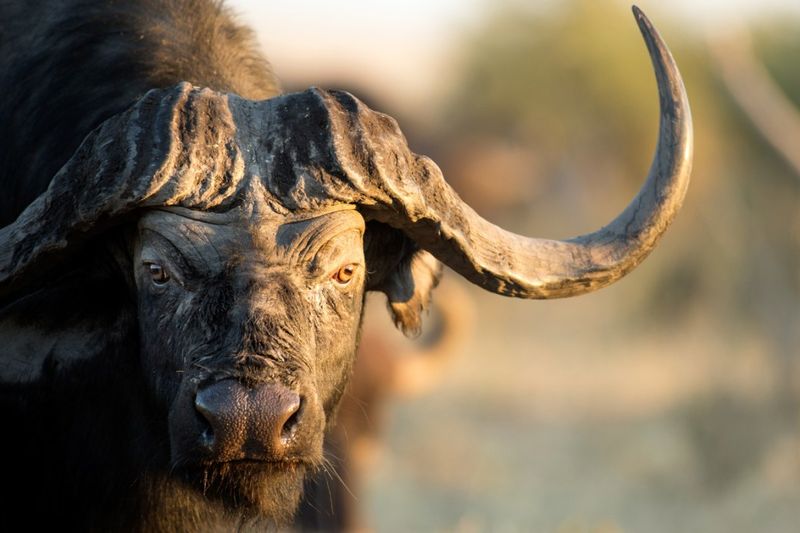
African hunters call the cape buffalo “the black death” for good reason. These massive bovines have never been successfully domesticated because of their unpredictable aggression and long memory for those who’ve threatened them.
Unlike many animals that attack out of hunger or fear, cape buffalo sometimes seem to hold grudges. Wounded buffalo have been known to circle back and ambush hunters, even waiting in hiding to charge unsuspecting humans who injured them hours earlier.
Their curved horns function as both shields and weapons, capable of goring predators (or humans) with devastating effectiveness. What makes them particularly dangerous is their herd mentality – when one buffalo is threatened, the entire herd may respond with a coordinated attack, creating a wall of charging muscle weighing up to a ton per animal.

